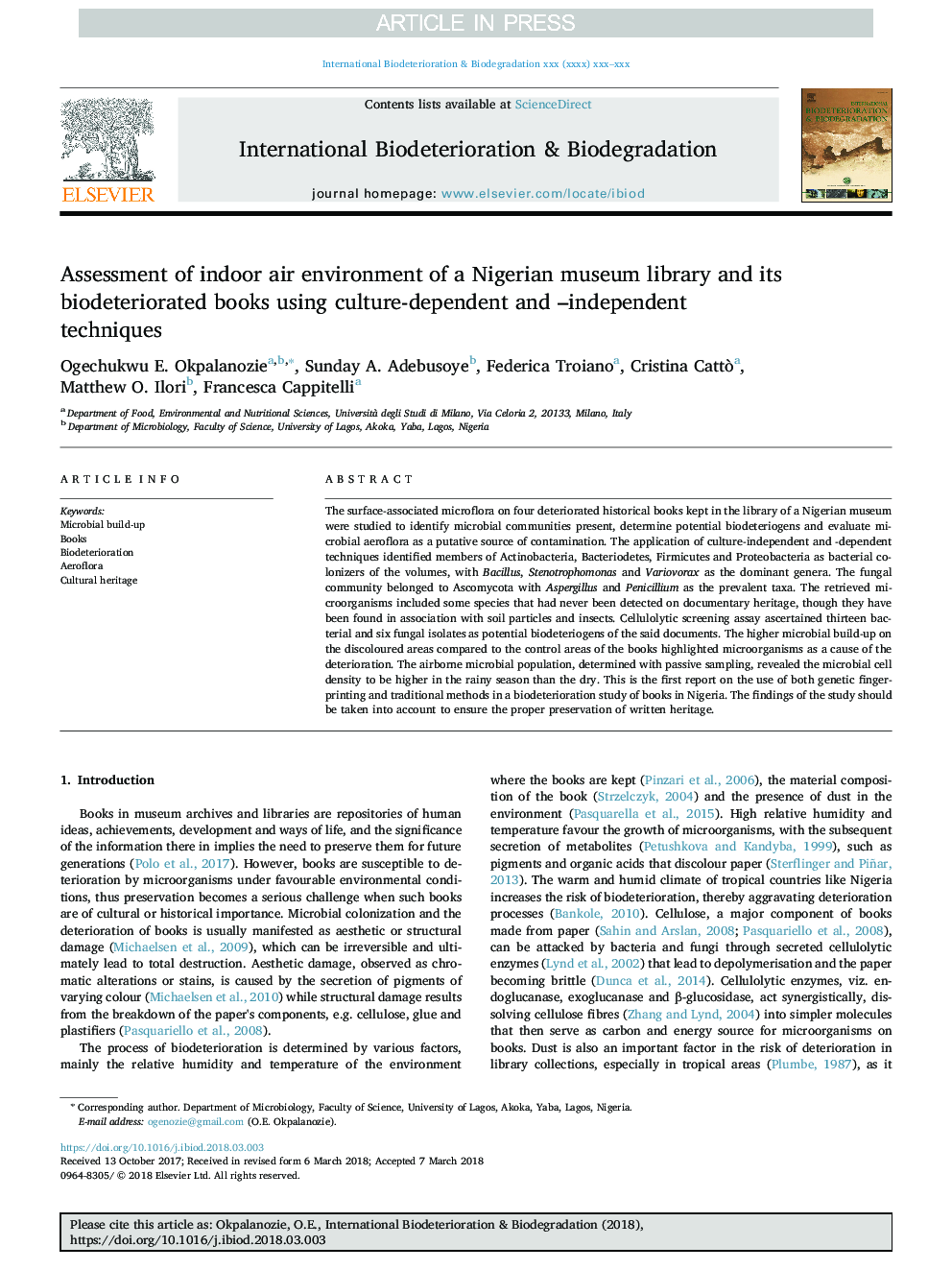| Article ID | Journal | Published Year | Pages | File Type |
|---|---|---|---|---|
| 8843750 | International Biodeterioration & Biodegradation | 2018 | 11 Pages |
Abstract
The surface-associated microflora on four deteriorated historical books kept in the library of a Nigerian museum were studied to identify microbial communities present, determine potential biodeteriogens and evaluate microbial aeroflora as a putative source of contamination. The application of culture-independent and -dependent techniques identified members of Actinobacteria, Bacteriodetes, Firmicutes and Proteobacteria as bacterial colonizers of the volumes, with Bacillus, Stenotrophomonas and Variovorax as the dominant genera. The fungal community belonged to Ascomycota with Aspergillus and Penicillium as the prevalent taxa. The retrieved microorganisms included some species that had never been detected on documentary heritage, though they have been found in association with soil particles and insects. Cellulolytic screening assay ascertained thirteen bacterial and six fungal isolates as potential biodeteriogens of the said documents. The higher microbial build-up on the discoloured areas compared to the control areas of the books highlighted microorganisms as a cause of the deterioration. The airborne microbial population, determined with passive sampling, revealed the microbial cell density to be higher in the rainy season than the dry. This is the first report on the use of both genetic fingerprinting and traditional methods in a biodeterioration study of books in Nigeria. The findings of the study should be taken into account to ensure the proper preservation of written heritage.
Related Topics
Life Sciences
Environmental Science
Environmental Science (General)
Authors
Ogechukwu E. Okpalanozie, Sunday A. Adebusoye, Federica Troiano, Cristina Cattò, Matthew O. Ilori, Francesca Cappitelli,
